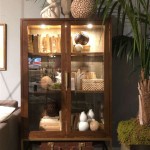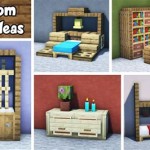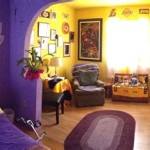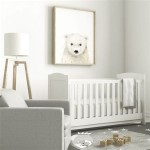How To Decorate a Three-Wall Living Room
Three-wall living rooms, often found in open-concept homes, present unique decorating challenges and opportunities. The absence of a fourth wall creates a sense of spaciousness but can also make defining the living area and achieving a sense of coziness more difficult. Careful planning and strategic placement of furniture and decor are essential to maximizing the potential of this layout.
Defining the living room area within the larger open space is the first crucial step. Area rugs are excellent tools for this purpose. A rug large enough to encompass the main seating area visually anchors the space and creates a distinct zone. Selecting a rug with a pattern or texture contrasting with the flooring further emphasizes this separation.
Furniture placement plays a significant role in shaping the flow and functionality of a three-wall living room. Positioning the sofa strategically is key. It can be placed against the longest wall to create a traditional focal point, or floated within the space to define the living area further. Floating the sofa allows for traffic flow around it and creates a sense of openness.
Selecting the right furniture pieces is crucial. Opting for furniture with visually lighter profiles, such as sofas with raised legs or open bases, can prevent the space from feeling overcrowded. This is especially important in smaller open-concept homes where visual clutter can easily overwhelm the area.
Incorporating other seating options adds flexibility and visual interest. Armchairs, ottomans, or even a loveseat can complement the sofa and create a more dynamic seating arrangement. Consider placing these pieces at angles to encourage conversation and create a more intimate feel.
Lighting is essential for defining the mood and functionality of any living room. In a three-wall space, it's especially important to consider both ambient and task lighting. Overhead fixtures provide general illumination, while floor lamps and table lamps create focused light for reading or other activities. Strategically placed lighting can also highlight architectural features or artwork.
Decorative elements contribute significantly to the overall aesthetic and personality of the room. Wall art, strategically placed on the available wall space, can draw the eye and create visual interest. Consider using a mix of framed prints, photographs, or even a large statement piece to add personality and style.
Incorporating shelves or built-in units provides valuable storage and display space. Shelving can be used to showcase books, decorative objects, and plants, adding personality and a sense of warmth to the room. Open shelving maintains a sense of airiness, while closed cabinets offer a more streamlined look.
Textiles introduce texture, color, and pattern to the space. Throw pillows, blankets, and curtains add warmth and visual interest. Choosing textiles in complementary colors and patterns helps create a cohesive and inviting atmosphere.
Plants breathe life into any living space. Incorporating greenery, whether through potted plants, hanging baskets, or even a small vertical garden, adds a touch of nature and freshness to the room. Plants also contribute to improved air quality.
Mirrors are valuable tools for enhancing the sense of space and light in a three-wall living room. Strategically placed mirrors can reflect natural light and create the illusion of a larger, brighter space. Consider placing a large mirror opposite a window to maximize this effect.
Maintaining visual continuity with the adjacent spaces is critical in an open-concept home. Coordinating the color palette, materials, and overall style of the living room with the kitchen, dining area, or other connected spaces creates a harmonious flow and a sense of unity throughout the home.
Consider traffic flow when arranging furniture and other elements. Ensure adequate space for movement between the living room and other areas of the home. Avoid placing furniture in areas that obstruct pathways or create bottlenecks.
Personalizing the space with items that reflect individual interests and hobbies adds character and warmth. Displaying treasured books, travel souvenirs, or family photos creates a unique and inviting atmosphere.
Regular decluttering is essential in maintaining a sense of order and tranquility in any living space. Keeping surfaces clear of unnecessary items and implementing storage solutions helps create a calm and inviting environment. Regularly reassessing the space and removing or rearranging items can prevent the area from feeling stagnant.

Three Simple Wall Of Art Ideas Farm House Living Room Small Decor Interior Design

Three Simple Wall Of Art Ideas Small Living Room Design Farmhouse Decor Coastal Decorating

Three Simple Wall Of Art Ideas Coastal Decorating Living Room Big Rooms

How To Decorate A Big Blank Wall Sanctuary Home Decor

How To Arrange Furniture In A Long Living Room Grace My Space
:max_bytes(150000):strip_icc()/277361690_491147482545457_3327539709784607689_n-bc3b68bcbcd84c30895b67d5ca31f2db.jpg?strip=all)
30 Living Room Wall Decor Ideas That Make A Statement

10 Tips For Styling Large Living Rooms Other Awkward Spaces The Inspired Room

Large Wall Decor Ideas For Living Room Mama Bear Bliss

10 Tips For Styling Large Living Rooms Other Awkward Spaces The Inspired Room

Design Mistake Diffe Walls Same Art Configurations Aka It S Time To Bring Life Your Emily Henderson
Related Posts







